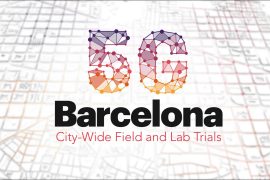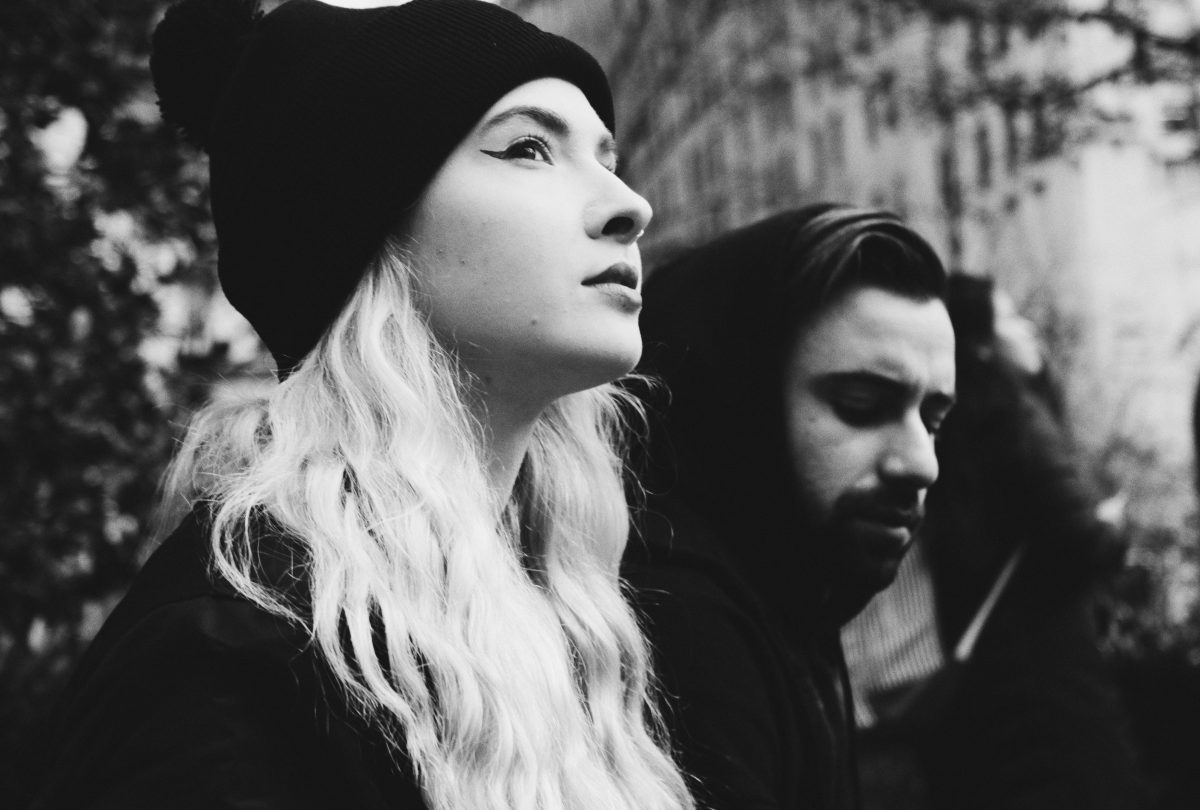
Minister for Enterprise and Knowledge Àngels Chacón highlights that “over...

The German city of Freiburg has become an example of...

On October 28th at 3 o'clock a.m. we rewinded the...

You would never say that Mari Carmen Tous is 85...

The hospital's managing director, Manel del Castillo, and the pharmaceutical...

Every great theory of the mythical German physicist was born...

In Barcelona there are four or five people who spread...

Approved by the Executive Committee, the principles underscore gender equality...

CosmoCaixa commemorates the half century of the arrival to the...

The laboratory was set up with the aim of turning...

Música clásica sobre la arena de la playa en dos...

The first session of the cycle on the regatta organized...

The hospital's managing director, Manel del Castillo, and the pharmaceutical...

Generalitat y Ayuntamiento impulsarán dos equipamientos de 'Casa de les...

Leticia Beleta, director of Alexion Pharmaceuticals in Spain and Portugal,...

We all have a friend who never leaves the Gràcia...

Barcelona director opts for Best International Film with 'La sociedad...

The hotel and industrial sectors softened the market's decline last...

The technology company, with a workforce of 35 employees and...

“The women of yesteryear were strong and had to fight...

[dropcap letter=”U”]
ntil the time of Louis XIV of France, the Parisian fairs constituted a top-tier entertainment for its citizens, eager to discover new pastimes, other than slicing up a gigantic sausage. Jesters, marionettes and wild beasts mingled with olives in brine, wines, low-key items and sweet-tongued magicians. In the middle ages, the fairs thrived across Europe: “bread and circus” for the people. Nevertheless, in 1683 England, one of its main attractions consisted in a stall with a printing machine that imprinted your name on a piece of paper for only 6 pence. Nevertheless, in the reign of Louis the Great, the Sun King, there was a fair that was different from the rest: that of the residential neighbourhood of Saint-Germain, which opened up a new page in the history of upscale shopping. Silver cutlery and jewellery, beautiful fabrics or exotic objects and products imported by the French East India Company were sold in the twenty pavilions that, for two months, created a new leisure formula that did not include bearded women. It was in this fair where, in 1672, coffee was taken for the first time in a public place. One century later, the great traveller Lady Mary Wortley Montagu, explained that nothing in England compared to a walk around this Parisian fair. In Saint-Germain, centuries before the existentialist gloominess of café noisette, arose a night-time street market —leisure in duplicate— that promoted an educated outlook on beauty, capable of appreciating haute couture and also feeling happiness browsing through well-travelled items that carry symbolic value, rather than thinking of them as old superfluous junk. Soon did the neighbourhood of Saint-Germain become the favourite of encyclopaedists and men of letters, and this became the birthplace of modern bohemians.
Now well into the 21st century, when technology overlaps with the physical experience of shopping, the cities open up their insides while searching for re-formulations of the market: places where memory is abandoned, but can also wake up with a start. In Bath, next to the Georgian Green Park Station, by the old trains, in a small enclosure, ecological flowers and tomatoes are for sale, apple pies, designer watches, t-shirts with messages or chocolates with intentions. This is a global pattern, and regardless of the country, e.g. London, Paris, Amsterdam, Oslo or Madrid —with its engine market—, or Lisbon, gathers into its fold young design, vegan restaurants, lists of handmade beers, novel handcrafts, smoothies of extravagant colours and youngsters riding bicycles. Some call them bohos —bohemian chic, despite being more of a 20th century term—, others call them hipsters and millennials, also yuccies, the cool evolution of gel-haired yuppies. So much so that the word bohemia contains melancholic undertones. It lacks singularity and, most certainly, extravagance.
The normcore has standardized a whole generation of young entrepreneurs who live in homes inspired by Nordic design, have blonde children and spend their summer in Formentera. Unlike the 90s mentality, built on a treadmill on which to digest their anxiety, this new bohemia aims to become moderately happy, but a cheesier version of happiness consisting in having a good standard of living. The elite of millennial bohemians is made up of connectivity wizards, network masters, the offspring of Steve Jobs, the one in black turtleneck pullovers and trainers, whose last word was: “¡Wow!” The Zuckerberg, Bezos, Musk, Dorsey and such, with their minimalist restrained partners, enjoy good wine and, instead of sailing in Sardinia, go all over Patagonia.
When the middle class is shrunk and reduced to a simple presence and the bourgeoisie —including its boredom— starts being nostalgic, the social gap widens and the great majority of the population become mere “users”. The “market of difference” aims to capture the emotion and yearning to live new experiences. It attracts its “client” with a sensorial menu, and invites him to enjoy a new sensuality and sets a scented candle scene, organic sponge cake, niche perfumes and a smart tv screen, an unflagging lover. Gilles Lipovetsky considers that “consumption designs nowadays more of a cultural than a social identity”. The stifling proliferation of fashion, café or bookshop chains does not leave much space for variety. Anyone who intends to stand out in this army of uniformed people, where everyone dresses like everyone else, anyone who wants to be different and unique, will have to either be called Palomo Spain, and proclaim the kingdom of androgynous baroque and walk around New York like Carmen Amaya and her gypsy band did in the past —grilling sardines in their luxury suite at the Waldorf Astoria—, or create an app and get rich. It is only then that will have become a true bohemian.

[dropcap letter=”U”]
ntil the time of Louis XIV of France, the Parisian fairs constituted a top-tier entertainment for its citizens, eager to discover new pastimes, other than slicing up a gigantic sausage. Jesters, marionettes and wild beasts mingled with olives in brine, wines, low-key items and sweet-tongued magicians. In the middle ages, the fairs thrived across Europe: “bread and circus” for the people. Nevertheless, in 1683 England, one of its main attractions consisted in a stall with a printing machine that imprinted your name on a piece of paper for only 6 pence. Nevertheless, in the reign of Louis the Great, the Sun King, there was a fair that was different from the rest: that of the residential neighbourhood of Saint-Germain, which opened up a new page in the history of upscale shopping. Silver cutlery and jewellery, beautiful fabrics or exotic objects and products imported by the French East India Company were sold in the twenty pavilions that, for two months, created a new leisure formula that did not include bearded women. It was in this fair where, in 1672, coffee was taken for the first time in a public place. One century later, the great traveller Lady Mary Wortley Montagu, explained that nothing in England compared to a walk around this Parisian fair. In Saint-Germain, centuries before the existentialist gloominess of café noisette, arose a night-time street market —leisure in duplicate— that promoted an educated outlook on beauty, capable of appreciating haute couture and also feeling happiness browsing through well-travelled items that carry symbolic value, rather than thinking of them as old superfluous junk. Soon did the neighbourhood of Saint-Germain become the favourite of encyclopaedists and men of letters, and this became the birthplace of modern bohemians.
Now well into the 21st century, when technology overlaps with the physical experience of shopping, the cities open up their insides while searching for re-formulations of the market: places where memory is abandoned, but can also wake up with a start. In Bath, next to the Georgian Green Park Station, by the old trains, in a small enclosure, ecological flowers and tomatoes are for sale, apple pies, designer watches, t-shirts with messages or chocolates with intentions. This is a global pattern, and regardless of the country, e.g. London, Paris, Amsterdam, Oslo or Madrid —with its engine market—, or Lisbon, gathers into its fold young design, vegan restaurants, lists of handmade beers, novel handcrafts, smoothies of extravagant colours and youngsters riding bicycles. Some call them bohos —bohemian chic, despite being more of a 20th century term—, others call them hipsters and millennials, also yuccies, the cool evolution of gel-haired yuppies. So much so that the word bohemia contains melancholic undertones. It lacks singularity and, most certainly, extravagance.
The normcore has standardized a whole generation of young entrepreneurs who live in homes inspired by Nordic design, have blonde children and spend their summer in Formentera. Unlike the 90s mentality, built on a treadmill on which to digest their anxiety, this new bohemia aims to become moderately happy, but a cheesier version of happiness consisting in having a good standard of living. The elite of millennial bohemians is made up of connectivity wizards, network masters, the offspring of Steve Jobs, the one in black turtleneck pullovers and trainers, whose last word was: “¡Wow!” The Zuckerberg, Bezos, Musk, Dorsey and such, with their minimalist restrained partners, enjoy good wine and, instead of sailing in Sardinia, go all over Patagonia.
When the middle class is shrunk and reduced to a simple presence and the bourgeoisie —including its boredom— starts being nostalgic, the social gap widens and the great majority of the population become mere “users”. The “market of difference” aims to capture the emotion and yearning to live new experiences. It attracts its “client” with a sensorial menu, and invites him to enjoy a new sensuality and sets a scented candle scene, organic sponge cake, niche perfumes and a smart tv screen, an unflagging lover. Gilles Lipovetsky considers that “consumption designs nowadays more of a cultural than a social identity”. The stifling proliferation of fashion, café or bookshop chains does not leave much space for variety. Anyone who intends to stand out in this army of uniformed people, where everyone dresses like everyone else, anyone who wants to be different and unique, will have to either be called Palomo Spain, and proclaim the kingdom of androgynous baroque and walk around New York like Carmen Amaya and her gypsy band did in the past —grilling sardines in their luxury suite at the Waldorf Astoria—, or create an app and get rich. It is only then that will have become a true bohemian.
